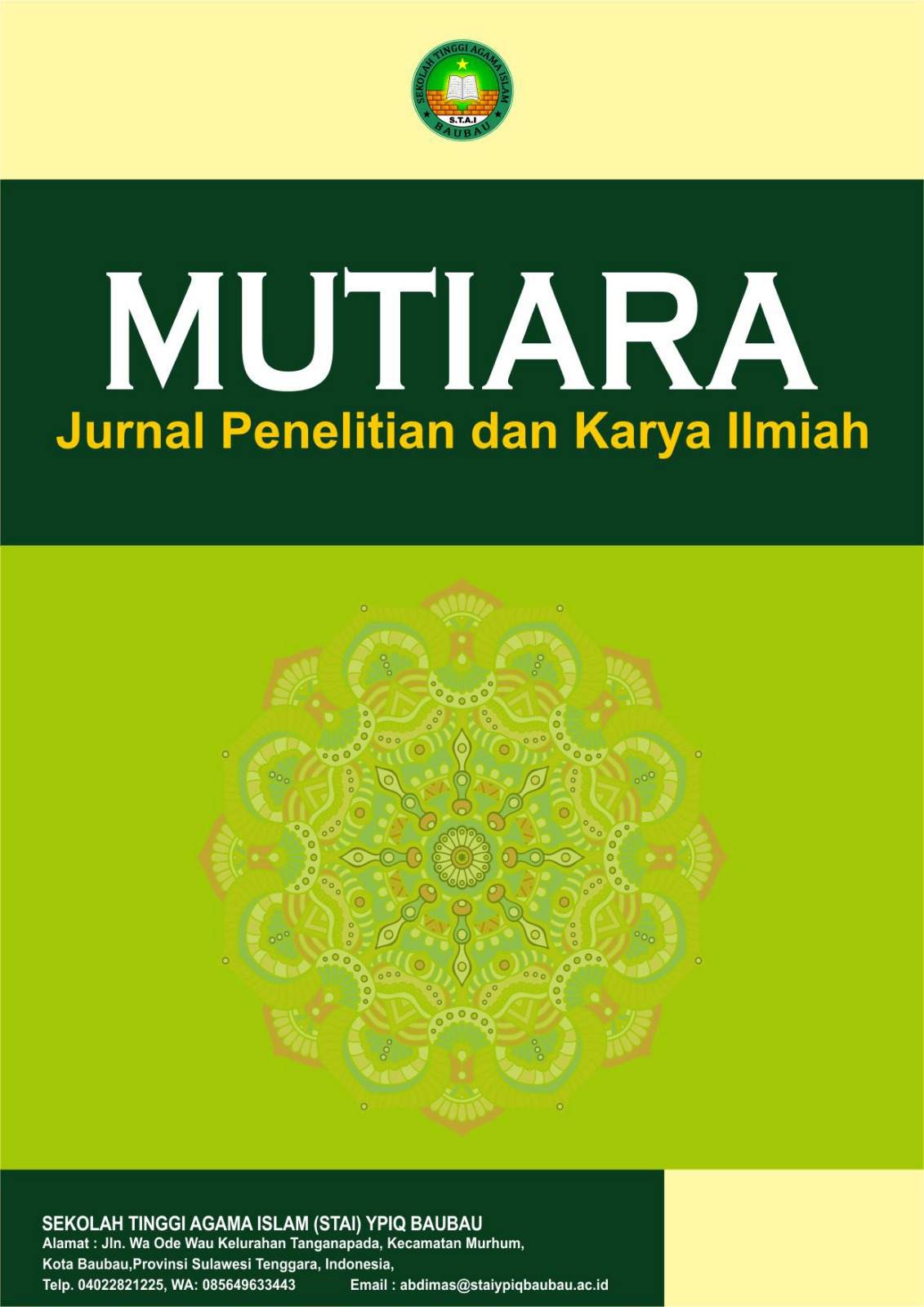Metode Everyone Is A Teacher Here Pada Mata Pelajaran SKI Terhadap Hasil Belajar Siswa Kelas VIII di MTS Al Futuhiyah Bumen Bumirejo Mojotengah Wonosobo
DOI:
https://doi.org/10.59059/mutiara.v3i1.2056Keywords:
Lesson Method, Everyone Is a Teacher Here, Learning OutcomesAbstract
This study aims to determine the influence of the Everyone is Teacher Here method on student learning outcomes in SKI subjects, to determine the improvement and difference in student learning outcomes that use the Everyone is Teacher Here method and those who do not use the Everyone is Teacher Here method in SKI subjects. This thesis research uses a quasi-experimental method with pretest posttest design in two classes. The experimental class uses the Everyone is Teacher Here method, while the control class uses conventional learning. The data was analyzed using the t-test and gain test to determine the difference and improvement of learning outcomes. The results of the study show that there is an influence of the everyone is a teacher here method on student learning outcomes. This is evidenced by the difference in student learning outcomes in SKI lessons that use the everyone is a teacher here method and those who use the conventional method with t-test results >good at a significance level of 1%, which is 4.32 > 2.677. Meanwhile, at the level of 5% significance, it is 4.32 > 2.008. There is an increase in student learning outcomes after using the everyone is a teacher here method. This is evidenced by the results of the gain test for the experimental class obtained a result of 0.538.
References
Abdul Majid. (2013). Strategi pembelajaran. Bandung: Remaja Rosdakarya.
Abdussamad Zuchri. (2021). Metode penelitian kualitatif. Makassar: CV Syakir Media Press.
Ahmadi, A., & Supriyono, W. (2003). Strategi belajar mengajar. Bandung: Refika Aditama.
Akhmad Sudrajat. (n.d.). Pengertian pendekatan, strategi, metode, teknik, taktik, dan model pembelajaran. Academia.edu.
Aswan Zain, & Djamarah, S. B. (2015). Strategi belajar mengajar. Jakarta: Rineka Cipta.
Cholid Nur. (2021). Menjadi guru profesional. Semarang: CV. Presisi Cipta Media.
Departemen Pendidikan Nasional. (2003). Undang-Undang Republik Indonesia Nomor 20 Tahun 2003 tentang Sistem Pendidikan Nasional. Jakarta: Departemen Pendidikan Nasional.
Djamarah, S. B. (2003). Strategi belajar mengajar. Bandung: Remaja Rosdakarya.
Fakultas Ilmu Tarbiyah dan Keguruan. (2021). Panduan penulisan skripsi. Wonosobo: UNSIQ Press.
Huda, M. (2013). Model-model pengajaran dan pembelajaran: Isu-isu metodis dan paradigmatis.
Ibrahim, A., Alang, A. H., Madi, B., & Ahmad, M. A. (2018). Metodologi penelitian. Makassar: Gunadarma Ilmu.
Jacob, Q., & Melendez, F. (2022). Think-pair-share method as a tool to increase student interest and learning outcomes. Word Psychology Journal, 1(3).
Kothari, C. R. (2004). Metode penelitian: Metode riset. Jakarta: Prenada Media Group.
Margono. (2010). Metodologi penelitian pendidikan. Jakarta: Rineka Cipta.
Nasional, I. D. P. (2003). Undang-Undang Republik Indonesia Nomor 20 Tahun 2003 Tentang Sistem Pendidikan Nasional. Jakarta: Departemen Pendidikan Nasional.
Rusman. (2017). Belajar dan pembelajaran: Berorientasi standar proses pendidikan. Jakarta: Kencana Prenada Media Group.
Sanjaya, W. (2018). Strategi pembelajaran: Berorientasi standar proses pendidikan. Jakarta: Kencana Prenada Media Group.
Silberman, M. L. (2013). Active learning: 101 cara belajar siswa aktif. Bandung: Nuansa Cendekia.
Sugiyono. (2020). Metode penelitian kuantitatif, kualitatif, dan R&D. Bandung: Alfabeta.
Sugiyono. (2021). Statistik untuk penelitian. Bandung: Alfabeta.
Zaini, H., Munthe, B., & Aryani, S. A. (2008). Strategi pembelajaran aktif. Yogyakarta: CTSD IAIN Sunan Kalijaga.
Downloads
Published
How to Cite
Issue
Section
License
Copyright (c) 2024 Mutiara : Jurnal Penelitian dan Karya Ilmiah

This work is licensed under a Creative Commons Attribution-ShareAlike 4.0 International License.








